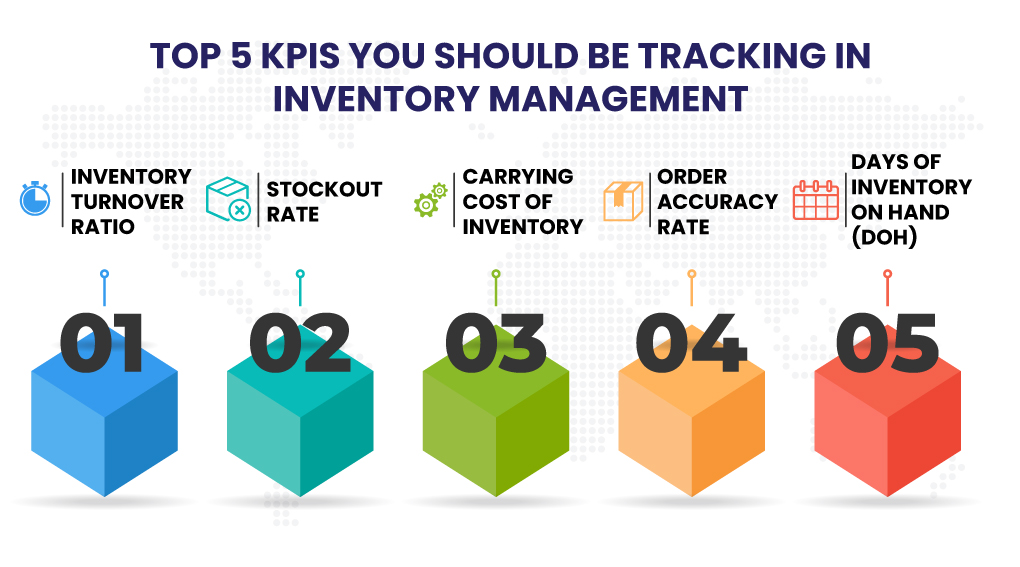Effective inventory management is crucial for businesses that want to reduce costs, improve cash flow, and deliver better customer experiences. At Vervebot, we understand the importance of data-driven decisions, and that starts with tracking the right Key Performance Indicators (KPIs).
In this blog, we’ll break down the top 5 inventory management KPIs every business should monitor to streamline operations and boost profitability.
1. Inventory Turnover Ratio
What it is:
The inventory turnover ratio measures how often inventory is sold and replaced over a specific period.
Why it matters:
A high turnover ratio indicates strong sales and efficient inventory use, while a low ratio may signal overstocking or weak demand.
Formula:
Inventory Turnover = Cost of Goods Sold (COGS) / Average Inventory
Tip:
Track this KPI monthly or quarterly to identify slow-moving items and optimize stock levels.
2. Stockout Rate
What it is:
The stockout rate shows how often items are unavailable when customers want to purchase them.
Why it matters:
Frequent stockouts can lead to lost sales, poor customer satisfaction, and damage to your brand reputation.
Formula:
Stockout Rate = (Number of Stockouts / Total Order Requests) x 100
Tip:
Integrate demand forecasting tools with your inventory system to reduce the risk of stockouts.
3. Carrying Cost of Inventory
What it is:
This KPI measures the total cost of holding unsold inventory, including storage, insurance, depreciation, and opportunity costs.
Why it matters:
Excess inventory ties up capital and increases costs. Lower carrying costs often lead to higher profit margins.
Formula:
Carrying Cost (%) = (Total Inventory Holding Costs / Total Inventory Value) x 100
Tip:
Use automated alerts and reorder points to balance inventory levels and reduce unnecessary holding costs.
4. Order Accuracy Rate
What it is:
Order accuracy tracks how often the right product is delivered to the right customer in the correct quantity.
Why it matters:
High order accuracy leads to better customer satisfaction, fewer returns, and reduced logistics costs.
Formula:
Order Accuracy Rate = (Number of Accurate Orders / Total Orders Shipped) x 100
Tip:
Invest in barcode scanning or RFID technology to minimize picking errors.
5. Days of Inventory on Hand (DOH)
What it is:
DOH tells you how many days your current inventory will last based on average daily sales.
Why it matters:
This KPI helps maintain optimal stock levels and prevents overstocking or understocking.
Formula:
DOH = (Average Inventory / COGS) x Number of Days
Tip:
Lower DOH usually means faster inventory turnover, but it should align with your business model and supply chain reliability.
Conclusion
Tracking the right inventory KPIs empowers businesses to make smarter decisions, reduce waste, and serve customers more efficiently. Whether you’re running an e-commerce store or managing a warehouse, using tools like Vervebot can help you monitor these metrics in real time and stay competitive.







